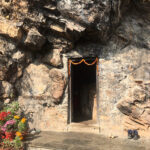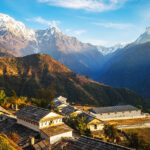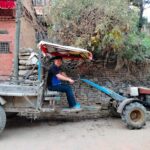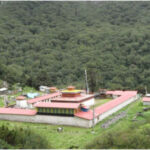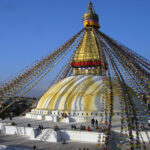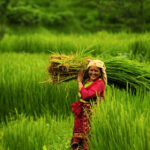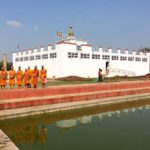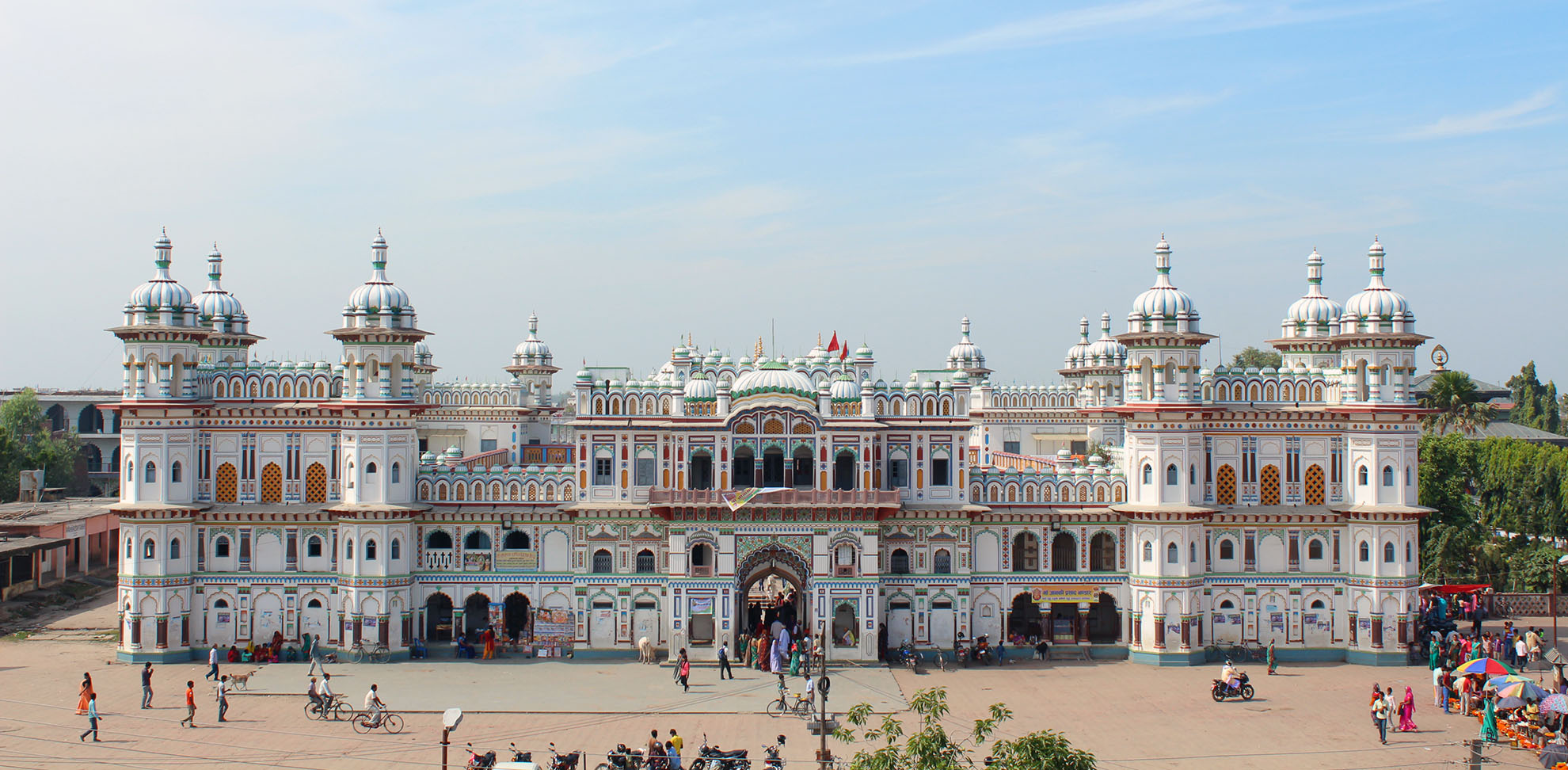
Janakpur – The Cultural and Spiritual Heart of Mithila
Janakpur, located in the southeastern plains of Nepal, is a city steeped in mythology, history, and vibrant cultural traditions. As the legendary birthplace of Goddess Sita (Janaki), the divine consort of Lord Ram, Janakpur is a revered Hindu pilgrimage site and the spiritual center of the Mithila region. The city is known for its grand temples, sacred ponds, colorful festivals, and the timeless art of Mithila painting. Pilgrims from India and Nepal flock here, especially during Ram Navami and Vivah Panchami, which celebrate the divine union of Ram and Sita. Janakpur’s unique charm lies in its combination of spiritual sanctity and cultural richness. Visitors can experience religious devotion, traditional art, and authentic Maithili hospitality in a city where mythology and daily life merge seamlessly. Whether you’re a history enthusiast, a spiritual seeker, or a culture lover, Janakpur promises a deeply immersive experience into one of South Asia’s most revered cultural landscapes.
Janaki Mandir: The Iconic Temple of Goddess Sita
Janaki Mandir is the spiritual epicenter of Janakpur and one of Nepal’s most revered temples. Dedicated to Goddess Sita—believed to be born in Janakpur—the temple is an architectural masterpiece that showcases a stunning blend of Mughal and Rajput styles. Commissioned in 1910 by Queen Vrisha Bhanu of Tikamgarh, the temple is built entirely from white marble and stone, earning it the nickname “Nau Lakha Mandir” due to its original construction cost of nine lakh rupees.
Inside the temple, golden idols of Sita, Ram, Lakshman, and Hanuman draw thousands of pilgrims and devotees. The temple becomes a focal point during festivals like Ram Navami and Vivah Panchami, when Janakpur comes alive with music, rituals, and theatrical reenactments of Ram and Sita’s wedding. The spiritual atmosphere and rich cultural heritage surrounding the temple make Janaki Mandir more than just a place of worship—it is a living monument to devotion and a cornerstone of Maithili identity.
Ram Mandir: A Spiritual Retreat in Janakpur
Located near the Janaki Mandir, Ram Mandir is a peaceful sanctuary dedicated to Lord Ram, offering a quieter, more contemplative atmosphere for visitors. Constructed in traditional pagoda style, this temple is smaller but equally significant in Janakpur’s spiritual landscape. It is especially popular among devotees during Ram Navami, celebrating the birth of Lord Ram.
Surrounded by lush greenery and less commercial buzz, Ram Mandir offers a spiritual retreat for meditation and reflection. The chants, bells, and incense-filled ambiance create a serene vibe. Devotees can often witness priests performing daily rituals and local pilgrims offering flowers and prayers in deep devotion. For travelers interested in experiencing Janakpur beyond its grand architecture, Ram Mandir provides an authentic, community-centered religious setting that speaks to the heart of Mithila’s devotion.
Dhanush Sagar and Ganga Sagar: Sacred Ponds of Janakpur
Dhanush Sagar and Ganga Sagar are two sacred ponds located near the Janaki Mandir, holding immense religious importance in Janakpur. These holy water bodies are linked to the Ramayana and are believed to purify the soul of anyone who bathes in them. Dhanush Sagar is particularly significant as it is said to have emerged from the remains of Lord Shiva’s bow, broken by Ram during Sita’s Swayamvara.
The serene setting of these ponds offers a tranquil place for prayer, reflection, and photography. Devotees often light oil lamps and offer flowers on the water’s edge, enhancing the spiritual aura. Visiting these sacred tanks is a vital part of the pilgrimage experience in Janakpur.
Ram Sita Vivah Mandap: A Symbol of Divine Union
The Ram Sita Vivah Mandap stands as a symbolic monument marking the sacred site where Lord Ram and Goddess Sita were married, according to Hindu mythology. Located within walking distance of Janaki Mandir, this elegant structure features a central pavilion surrounded by four smaller shrines, each representing key figures from the epic wedding—Ram, Sita, Lakshman, and Hanuman.
The Mandap is the centerpiece of the annual Vivah Panchami festival, drawing thousands of devotees and observers from Nepal and India. The site hosts vibrant wedding reenactments with music, rituals, and theatrical processions that bring the Ramayana to life. Beyond its religious value, the Mandap serves as a cultural touchstone for the Mithila region, representing the enduring ideals of love, duty, and divine union. Visitors often find the serene setting ideal for contemplation and learning more about the cultural fabric that defines Janakpur’s identity.
Janakpur Railway Station: A Heritage Marvel
Janakpur Railway Station is more than just a transit point—it’s a living relic of Nepal’s rail history. Originally established during the British era, the narrow-gauge railway once connected Janakpur to the Indian town of Jaynagar. Recently upgraded into a broad-gauge line, it’s now the only operational railway in Nepal, offering a unique and scenic cross-border travel experience.
The station building itself features colonial-era architecture with local influences, making it an attraction for history and photography enthusiasts. Travelers can enjoy a short, nostalgic ride that offers glimpses into rural life and the harmonious blend of Nepali and Indian cultures along the Terai plains.
Exploring Mithila Art and Painting Traditions
Mithila art, also known as Madhubani painting, is one of the most iconic cultural treasures of Janakpur and the broader Mithila region. This ancient folk art, traditionally created by Maithili women on mud walls and floors, has evolved into vibrant canvases, paper, textiles, and household objects. With motifs rooted in mythology, nature, and daily life, these paintings are known for their bold colors, geometric patterns, and symbolic imagery featuring Hindu gods, animals, and floral designs.
A visit to Janakpur offers a firsthand opportunity to explore this living art form. The Janakpur Women’s Development Centre is an excellent place to see artists at work and purchase authentic hand-painted items such as coasters, bags, wall hangings, and greeting cards. Many workshops also allow visitors to try their hand at creating their own Mithila masterpiece under the guidance of local artisans.
Mithila art isn’t just decorative—it’s a storytelling tradition, expressing generations of beliefs, social values, and environmental harmony. As UNESCO has recognized the cultural significance of this art form, supporting it helps preserve a rich intangible heritage while empowering local women economically. Whether you’re an art lover, a collector, or a curious traveler, immersing yourself in Mithila painting is a must in Janakpur.
Festivals of Janakpur: Vivah Panchami, Chhath, and More
Janakpur is a city of festivals, where culture and devotion come alive with vibrant celebrations. The most iconic is Vivah Panchami, which commemorates the divine wedding of Ram and Sita. Celebrated in late November or early December, it features a week-long festival of rituals, processions, and reenactments of the marriage, attracting thousands of pilgrims from across Nepal and India.
Chhath Puja, dedicated to the Sun God, is another major festival, marked by offerings at dawn and dusk near sacred ponds like Ganga Sagar and Dhanush Sagar. The festival promotes environmental awareness and family unity.
Other local celebrations include Ram Navami, Teej, and Holi, which are equally colorful and deeply rooted in Mithila customs. Experiencing these festivals in Janakpur is an unforgettable cultural immersion.
Attend a Mithila Wedding Re-enactment
One of the most unique cultural experiences in Janakpur is attending a Mithila wedding reenactment, especially during the Vivah Panchami festival. These ceremonial performances recreate the wedding of Ram and Sita, following traditional Maithili customs and rituals with incredible detail and devotion. Local actors, often accompanied by priests and community leaders, dress in full wedding attire and follow an authentic procession from Ram Mandir to Janaki Mandir.
The event is more than theatrical—it’s a community celebration, rich in symbolism and music, that promotes cultural preservation. Visitors are often invited to join the festivities, offering a rare chance to witness living heritage in action. Colorful Maithili attire, folk songs, and traditional food create a festive atmosphere. Participating in or observing this event provides meaningful insight into the values and communal spirit of the Mithila people.
Shopping for Mithila Crafts and Souvenirs
Janakpur offers a delightful shopping experience for those seeking unique cultural souvenirs. The local markets and artisan cooperatives are brimming with Mithila paintings, hand-painted household items, clay figurines, traditional jewelry, and vibrant textiles. Popular shopping areas include the Janakpur Women’s Development Centre and small stalls around Janaki Mandir.
Mithila souvenirs make perfect gifts and home décor, and purchasing them supports local artisans—especially women—who continue this centuries-old tradition. For an authentic touch, choose handcrafted items that depict scenes from Hindu epics or rural life in Mithila. Shopping in Janakpur is not just commerce; it’s cultural appreciation in action.
Food Guide: What to Eat in Janakpur
Janakpur’s cuisine reflects the rich culinary heritage of the Maithili culture, known for its flavorful vegetarian dishes, sweets, and festive specialties. A typical local meal might include bhat (rice), daal (lentils), tarkari (vegetables), and achaar (pickle). One must-try delicacy is ghugni, a spiced chickpea dish enjoyed as a snack or breakfast.
Maithili sweets are another highlight—don’t miss anarsa, thekua, and balushahi, often prepared during festivals. Street food enthusiasts will enjoy samosas, puris, jalebis, and lassi, served fresh and full of flavor.
Many local eateries near Janaki Mandir offer affordable thalis (platters), while some guesthouses provide home-cooked Maithili meals. If you’re looking for a sit-down experience, try Hotel Welcome, Hotel Sitasharan, or Sita Palace for clean and comfortable dining. The food in Janakpur is more than nourishment—it’s a gateway to the region’s cultural identity, served with genuine hospitality.
How to Reach Janakpur (By Air, Train, Road)
Reaching Janakpur is convenient with multiple transportation options.
By air, the easiest way is a 25-minute domestic flight from Kathmandu to Janakpur Airport, located just 5 km from the city center. Flights operate daily and are ideal for time-bound travelers.
By train, Janakpur is connected to India through the Jaynagar–Janakpur–Kurtha Railway, offering a cross-border travel experience. This route is especially popular with Indian pilgrims visiting Janaki Mandir.
By road, Janakpur is approximately 390 km from Kathmandu and takes around 8–10 hours via the East-West Highway. Buses, private cars, and tourist vehicles regularly operate on this route.
Each mode offers a different way to enjoy the journey to Nepal’s cultural heartland.
Best Time to Visit Janakpur
The best time to visit Janakpur is during the cool and dry months from October to March, when temperatures are pleasant and festivals abound. This period aligns with major cultural events like Vivah Panchami and Chhath, providing a deeper cultural immersion and more comfortable travel conditions.
Spring (March to May) offers warm weather and blooming surroundings, though days can get hot by late May. Summer and monsoon months (June to September) bring heavy rainfall, which can hinder travel plans and sightseeing, though the landscape turns lush and green.
For pilgrims and festival-goers, November–December is the most recommended window. However, travelers seeking a peaceful, uncrowded experience may prefer early spring or late winter. Regardless of the season, Janakpur’s charm lies in its timeless devotion and culture.

